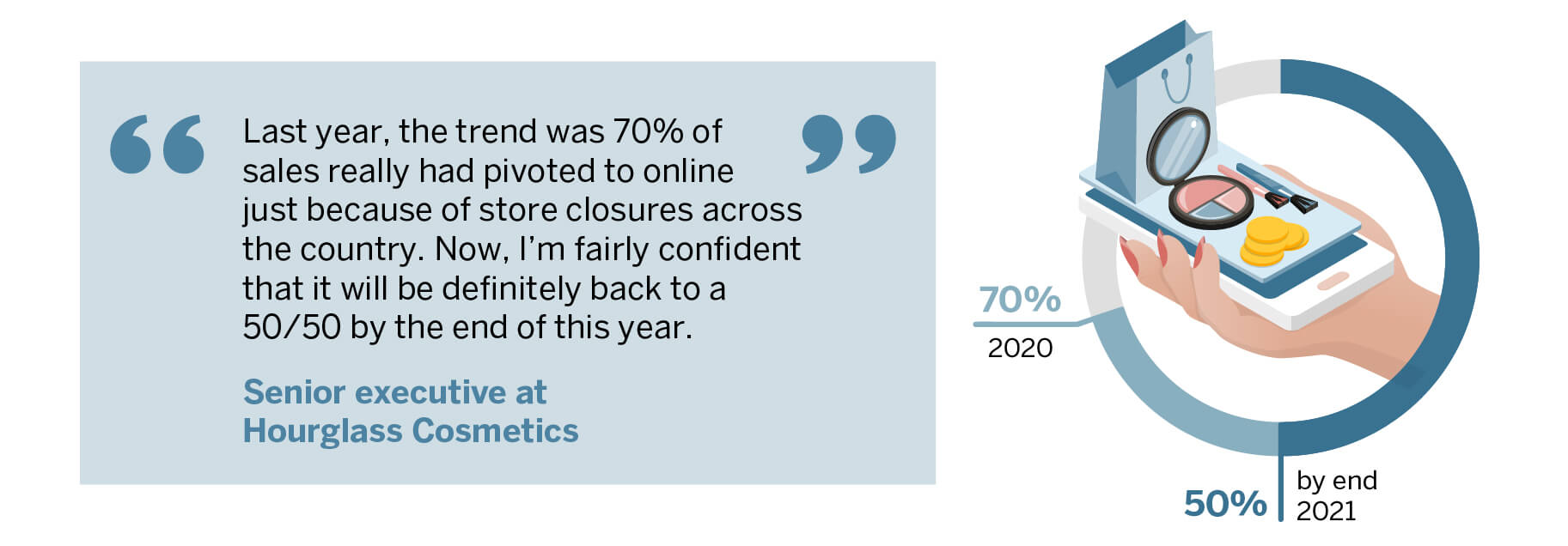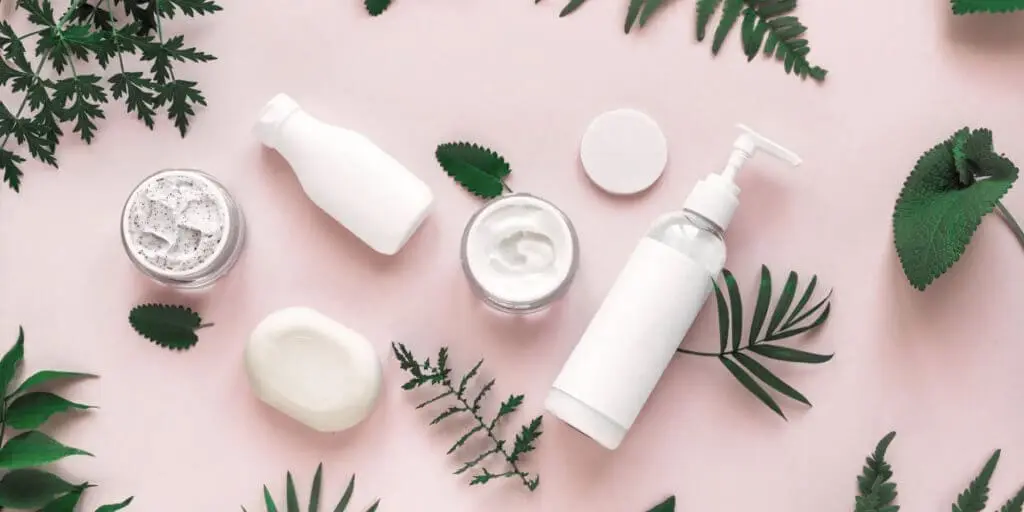What’s changed during the pandemic is that people have shifted from colour towards skin. According to a senior executive at Hourglass Cosmetics, “in the last year, skincare has been the biggest piece of the pie, I would say probably 70-80% of the pie, and colour has made up very little.” However, they anticipate that consumer interest in colour will blossom again soon. Another specialist agreed. “In a couple of years we’re thinking, what we’re seeing trend-wise, that it’s going to move over to colour more. We don’t see the heavy-glam look coming back in two years, but colour is going to pick back up”, a former demand planning manager at L’Oréal USA Inc explained.
The former L’Oréal planning manager also envisages another difference. “The mask era is not going to end, even if the population is fully vaccinated, for another couple of years.” As a result, they believe there will be more emphasis on eye colour and other eye categories. And as “maskne” is another problem, “people are looking at lighter solutions to colour. This is why I said tinted moisturisers, and from a face perspective, just lighter makeup.”
This leads on to another trend, which was developing in recent years but has been propelled lately. Consumers want “clean” beauty. “If they have control over what they buy and put on their skin and their body and on their scalp, they want to know it is good for them, at least in their own estimation”, noted a senior executive from Olaplex. However, we heard there is confusion among consumers regarding the difference between dermatology and clean brands – “they’re like, ‘If it’s dermatology, it’s chemical’”, commented the former L’Oréal executive.
Looking closer at the numbers, a senior executive from Olaplex commented that “against the entire Q1 2020, overall beauty was up.” And although prestige beauty declined by 19% in 2020 as a whole, in Q1 2021 on a YoY basis it “was up 11%, and under prestige beauty… skincare was up 12%… makeup was down 9%, fragrance was up 45% and haircare was up 48%.”
Masstige – blending the prestige and mass categories – is also performing well. Estimating the market size, the former L’Oréal executive commented that “I would allege probably 50% to be mass, and then the balance would be 30% in masstige and 20% in prestige”. Explaining more about its niche, the Hourglass Cosmetics executive noted that “there’s always an aspirational element to it, but it’s still attainable from a price point perspective. I think prestige and luxury still struggle because partly they don’t offer as many promotions and they don’t really offer as many incentives for a purchase.”
Examples of brands sitting within this intersection include Kylie Cosmetics and The Ordinary, while Sephora and Ulta are prominent retailers. Another that stands out is Goop, which is Gwenyth Paltrow’s brand. “Consumers are learning more about skincare, and… Goop is doing really, really well. People love Goop. The sunscreen, in fact, it’s super in-demand. They have differentiated their product line.” Fenty Beauty, launched by Rihanna, “came out with 40 different shades of foundation and they completely changed the industry. There was an expectation for inclusivity previously, but not to the same extent until Fenty broke everything open.” In fact, brand messaging, for example, focusing on diversity or sustainability, was cited as another vital element for companies to tap into now more than ever. “The story that we hear a lot from consumers, and often see in reporting, is that your message, your brand purpose is really what is going to keep a consumer with you.”

Even though there will always be a place for physical stores, some companies are developing technology for optimising online beauty shopping. “YouCam, as an organisation, is a technology that has really spent a lot of time trying to perfect that AR experience, but there is still a lot of difficulty with it. Online matching in that way is still kind of the Wild West.” Another notable company is Modiface, which was bought by L’Oréal in 2018: “that technology is no longer really available to other brands, but they had fantastic, to my understanding, shade-matching capabilities.”
As we emerge from the pandemic, it’s still unclear if any new trends are set to crop up or how long lasting these current ones will be. But with consumers learning more about skincare, and the US on a more steady economic footing, it’s certain that this industry will continue to bounce back.
The information used in compiling this document has been obtained by Third Bridge from experts participating in Forum Interviews. Third Bridge does not warrant the accuracy of the information and has not independently verified it. It should not be regarded as a trade recommendation or form the basis of any investment decision.
For any enquiries, please contact sales@thirdbridge.com





